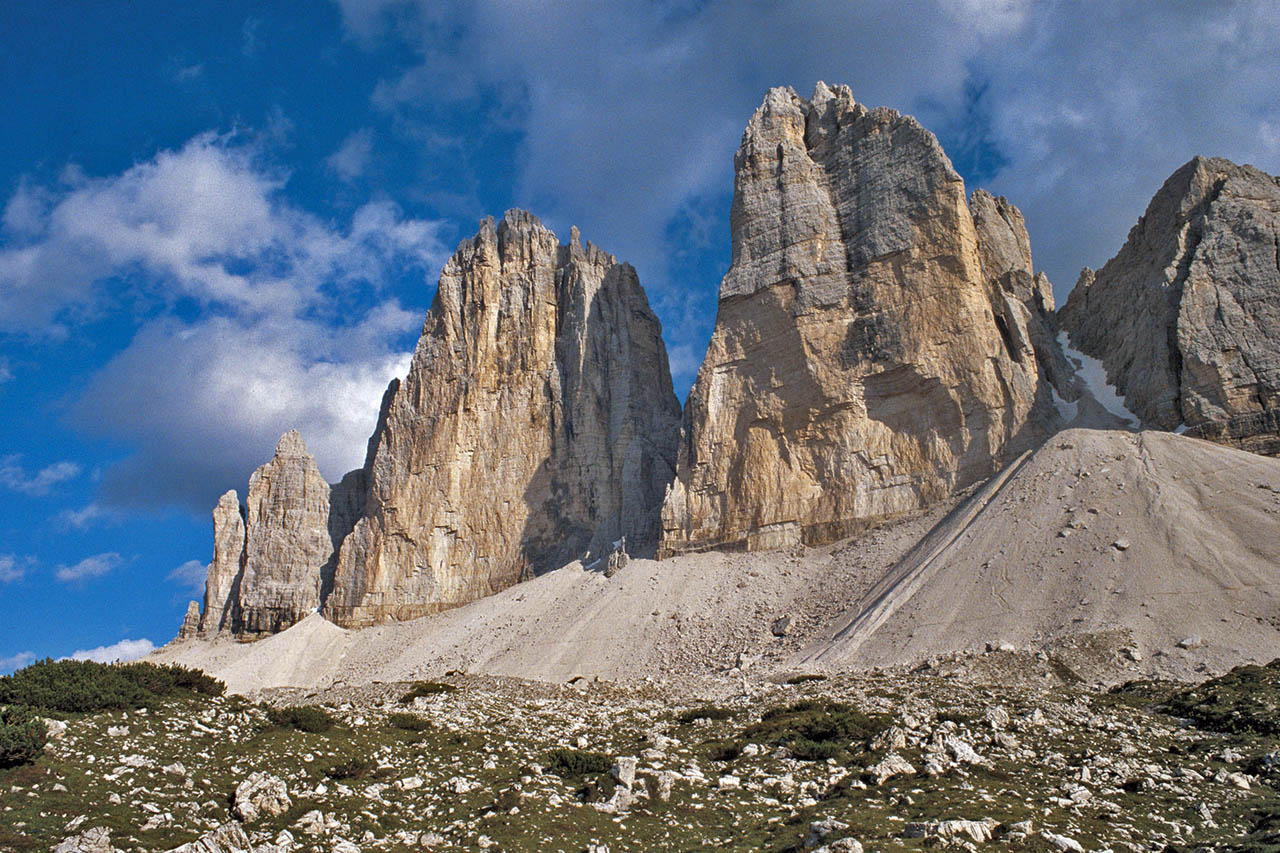The Pillars of Hercules
300 year-exploration in the Dolomites
In July 1726, the Venetians Pietro Stefanelli and Giovanni Zanichelli reached the top of the “Cimon del Cavallo”, one of the tops of the Dolomites that can be seen from the lagoon. They wrote “Up there an ample solitude, horrible and beautiful places, no sign of human beings and plantation”.
They were botanists: why did they get to the top? Certainly not to emulate hunters and shepherds. They got there because of the enticement of their spirits: it happens sometimes. This happened sixty years before the conquest of the Mont Blanc, hundred years before the journeys of Goethe. In that year people began to hike, a long history, during which travellers and foreign hikers shared their experience with the local guides, with the publicans, with the history and the tradition of the people. In England, travel guides and travel diaries were published, which were included in the publications of the Alpin Journal, the excellent Book of George Cheetham Churcill and Josiah Gilbert, The Dolomite Mountains (1864). Their work “launches” the Dolomites that are included in the “Aplin Tour” since then.
As soon as the major tops were reached, hikers began to explore the crests, the sides, each time having a more difficult goal. In 1925 the most magnificent top was reached, the Civetta. Afterwards we get to more recent times, with Sesto Grado, Artificiale and Nuovo Cammino, till 2012. In 2012, always on the Civetta, the most intrepid path was opened: The Pillars of Hercules. This path is one of the most difficult, beautiful and pure where you can free-climb. After this challenge, hikers walk through the other sides easily, maybe forgetting the most authentic exploration.
Still nowadays, the hikers of the past can be the angels of knowledge of a sublime world, and people, tourists as well, treasure this knowledge.
The Pillars of Hercules are splits that we opened, because we are curios, because we need to go beyond the borders to overthrow fears and conflicts.
Alessandro Gogna
[Translation by Sara Covelli]
credits:
foto1: Nicola Tondini in apertura di Colonne d’Ercole, parete nord-ovest del Civetta. (Photo Alessandro Baù)
foto2: L’irlandese John Ball
foto3: Sassolungo e Sassopiatto dall’Alpe di Siusi, in un’illustrazione dei britannici J. Gilbert e G. C. Churchill, “The Dolomite Mountains” del 1864
foto4: Tre Cime di Lavaredo. Photo A. Gogna -K3PhotoAgency




